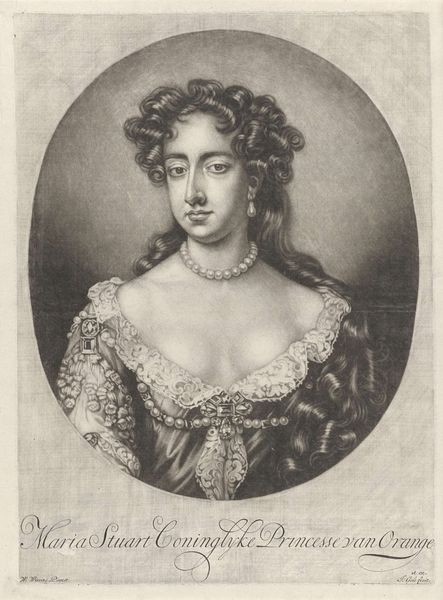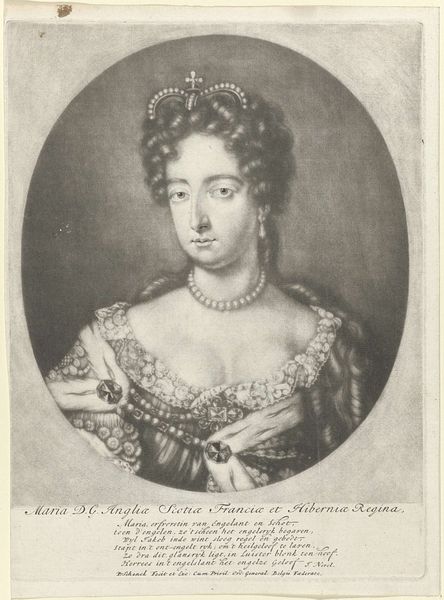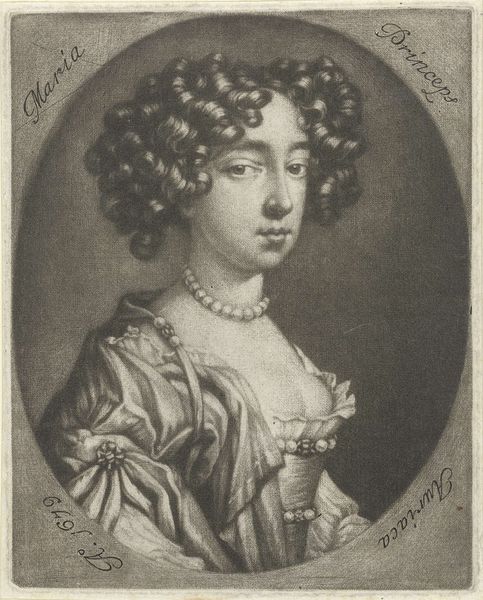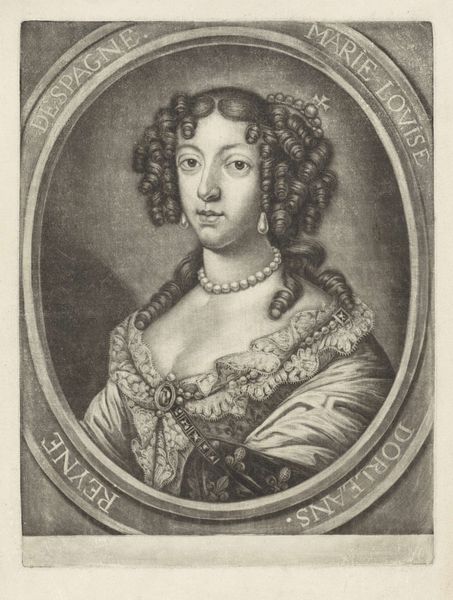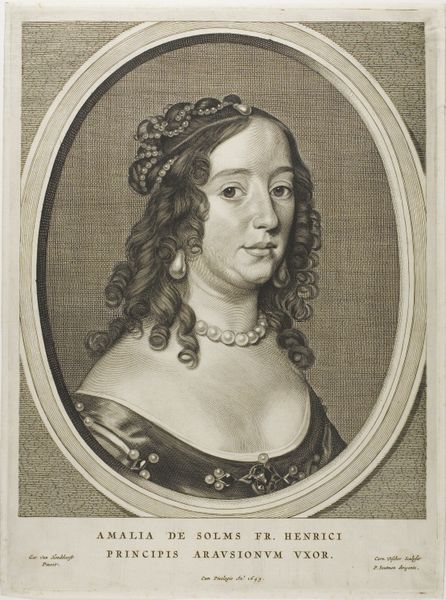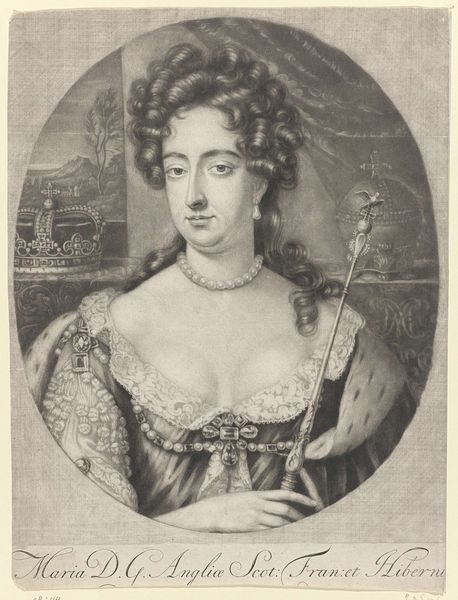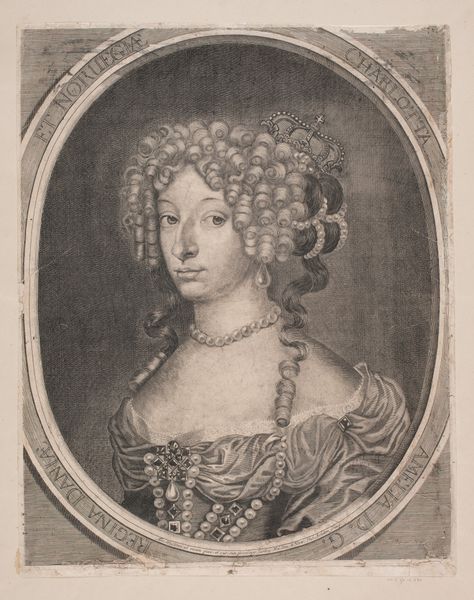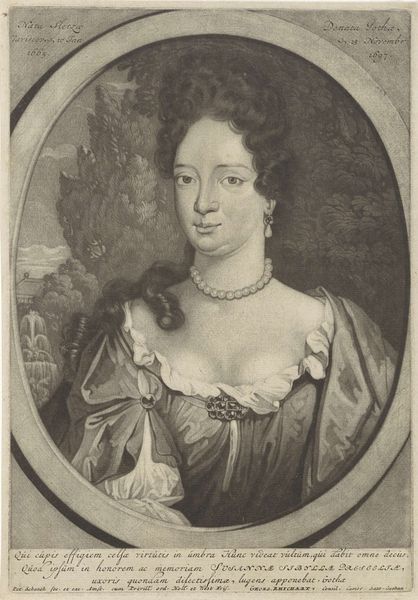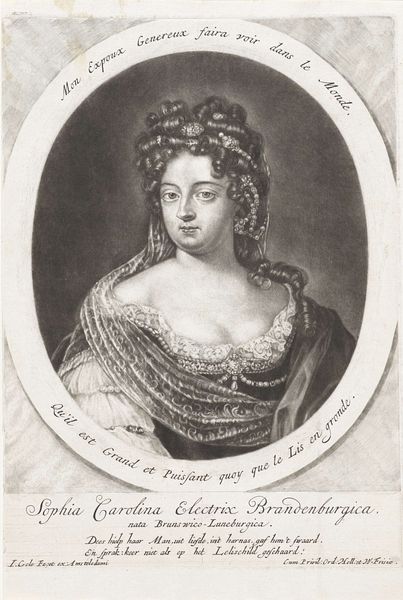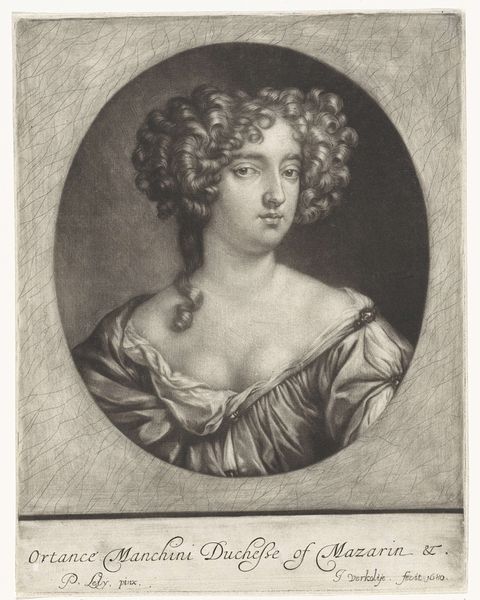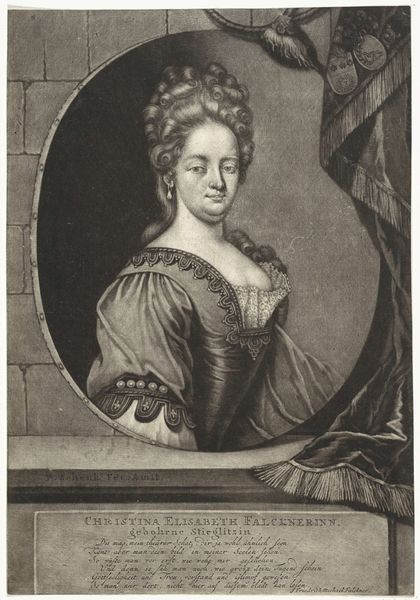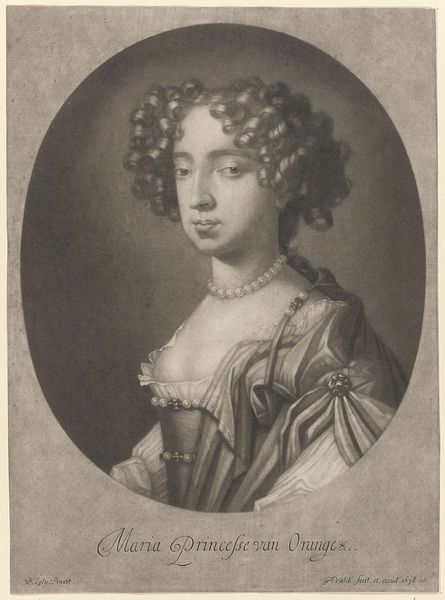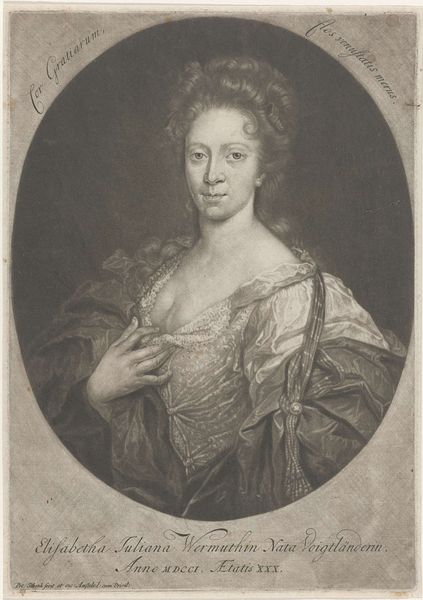
print, engraving
#
portrait
#
baroque
# print
#
engraving
Dimensions: height 335 mm, width 256 mm
Copyright: Rijks Museum: Open Domain
Editor: This is "Portret van Ann, hertogin van Monmouth," dating from around 1657-1693, by Jan van der Vaart, rendered as an engraving. It strikes me as quite formal, almost restrained despite the ornate details. What stands out to you in this piece? Curator: The engraving speaks volumes about the social positioning of women like Ann within the power structures of the late 17th century. It is important to recognise her as not just a figure of beauty but also an object within patriarchal systems of inheritance and political alliance. How do you think the pearls and elaborate dress contribute to that reading? Editor: They definitely reinforce a sense of wealth and status. The pearls seem almost like a symbolic weight around her neck, a representation of the obligations of her position. Curator: Exactly. And it's crucial to question how much agency Ann herself had in crafting this image. Was it truly *her* self-representation, or a construction dictated by the expectations placed upon her as a Duchess? Consider her role within the tumultuous politics of the era; could this portrait function as a form of controlled propaganda? Editor: I hadn't considered the portrait as propaganda, but that makes sense given the period's politics. It frames her in a very specific, almost idealized way. Do you think the artist challenged those expectations at all, or was he simply reinforcing them? Curator: I think it's naive to see the artist pushing any subversive political agenda here. We cannot separate van der Vaart's agency from the economic reality that his art needed to reinforce these powerful family dynasties and its political ambitions. Now, to truly interrogate this work, we have to ask questions about our own role in reproducing class structures through art consumption. Editor: That's a really interesting point. I guess even by studying it, we're perpetuating the narrative to some extent. It does give me a new way of thinking about portraiture and the social implications of art. Curator: Absolutely. Viewing art critically requires active participation, seeing these objects not in isolation, but as products and reflections of power.
Comments
No comments
Be the first to comment and join the conversation on the ultimate creative platform.
